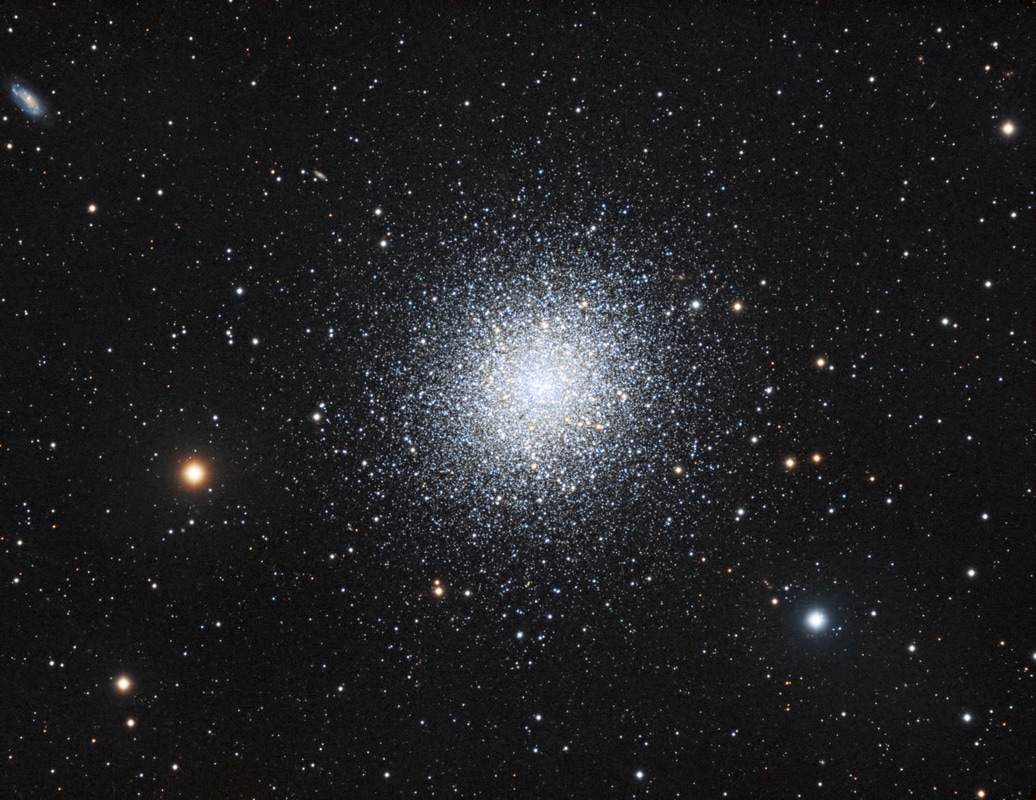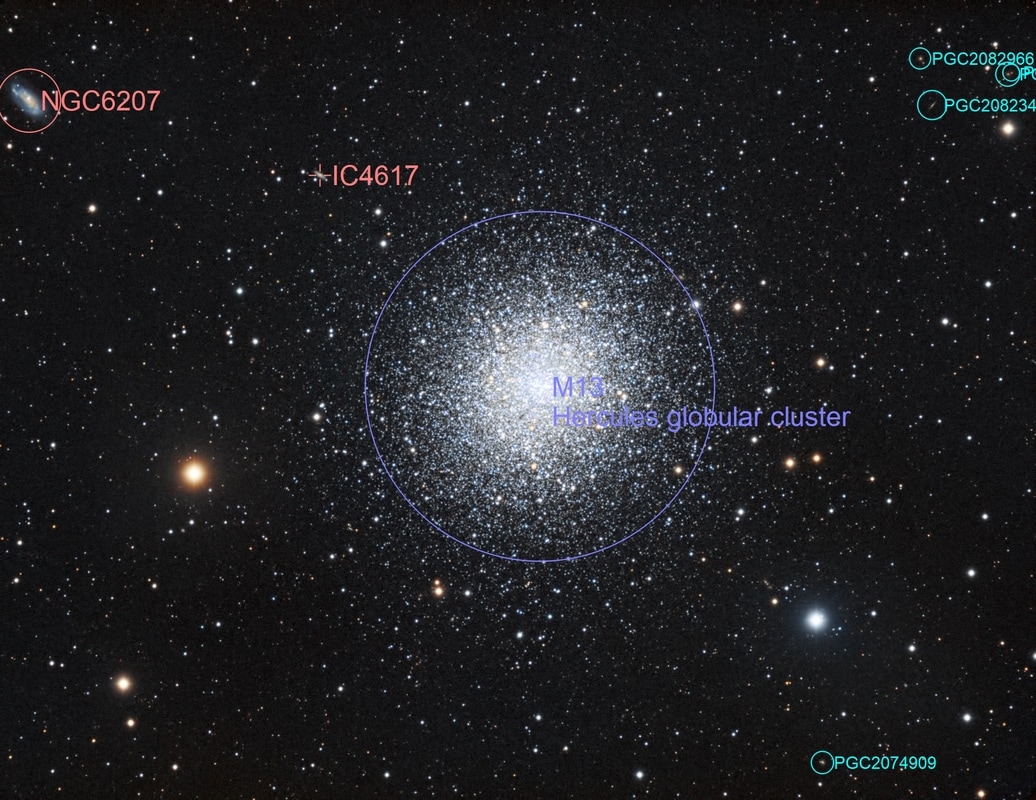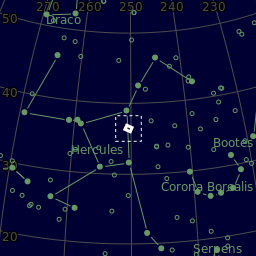M13 - The Great Globular cluster
|
Details.
M: Mesu 200 T: TMB 152/1200 C: QSI683 Baader LRGB filters 30x600s Luminance 30x600s Red 30x600s Green 30x600s Blue Totalling 20 hours. This was all taken as well during the full moon period, as Globular clusters are less affected by moonlight than other Deep Sky objects. |
Messier 13 (M13), also designated NGC6205 and sometimes called theGreat Globular Cluster in Hercules or the Hercules Globular Cluster, is a globular cluster of about 300,000 stars in the constellation of Hercules.
M13 is about 145 light-years in diameter and is 25,100 light-years away from Earth. It was discovered in 1714 by Edmund Halley. A globular cluster is a spherical collection of stars that orbits a galactic core as as satellite. Globular clusters are very tightly bound by gravity, which gives them their spherical shapes and relatively high stellar densities toward their centres. |



